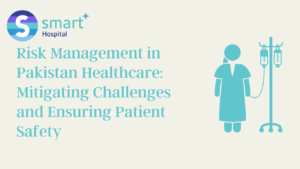In the healthcare system, the safety of patients should always be the top priority. Every measure taken within hospitals aims to ensure patients receive the highest quality care. One critical aspect of providing safe and effective healthcare is equipment calibration. Equipment calibration is vital in ensuring the accuracy and reliability of medical devices and hospital instruments.
This blog will delve into the significance of equipment calibration in the context of the healthcare system in Pakistan and how it contributes to patient safety.
What is Equipment Calibration?
Before we explore the importance of equipment calibration, let’s understand what it entails.
Equipment calibration is the process of comparing the measurements of a medical device to a known and traceable standard to determine its accuracy. Adjustments are made to the device during calibration to align with the desired standard. This process is essential because it guarantees that medical equipment provides accurate and reliable readings.
Accurate measurements are crucial in healthcare. Whether it’s a blood pressure monitor, an ultrasound machine, or a laboratory analyzer, the results produced by these devices are the foundation of accurate diagnoses and appropriate treatments. Without proper calibration, there is a risk of inaccurate readings, which can lead to medical errors and compromise patient safety.
Ensuring Accuracy and Reliability
The impact of inaccurate medical equipment on patient safety cannot be underestimated. Consider a scenario where a patient’s blood pressure is incorrectly measured due to a poorly calibrated device. This could lead to a misdiagnosis or the wrong medication dosage, resulting in adverse health effects for the patient. Inaccurate equipment readings can lead to wrong decisions and jeopardize patient well-being.
Calibration minimizes the risks associated with equipment errors by ensuring that medical devices operate within specified tolerances. Real-life case studies provide a stark reminder of the consequences of using uncalibrated equipment. In one instance, a misaligned radiation therapy machine resulted in patients receiving incorrect doses of radiation, causing severe harm. These incidents highlight the critical need for regular equipment calibration to prevent such errors and protect patients.
Compliance with Regulatory Standards
Regulatory bodies and guidelines mandate equipment calibration in hospitals to ensure patient safety. In Pakistan, the Drug Regulatory Authority of Pakistan (DRAP) sets guidelines for medical device calibration and requires compliance from healthcare institutions. These regulatory standards serve as a framework for maintaining the accuracy and reliability of medical equipment, providing a level of assurance to patients and healthcare professionals alike.
Non-compliance with calibration requirements can have serious consequences. It may result in:
- Legal implications
- Financial penalties,
- Suspension of a healthcare facility’s operations
Preventing Medical Errors
Calibration also contributes to effective treatment and improved patient outcomes. Precise measurements help healthcare professionals monitor patients’ conditions accurately, enabling them to make timely interventions. Whether it’s administering medication, adjusting dosages, or monitoring vital signs, calibration ensures that healthcare providers have reliable information to guide their actions. This contributes to better treatment plans, reduced risks, and enhanced patient recovery.
Proactive equipment maintenance through regular calibration offers several benefits:
- Extends the lifespan of medical devices.
- Reduces downtime caused by equipment failure.
- Enhances overall operational efficiency.
Implementing Effective Calibration Programs
Hospitals need to develop comprehensive calibration plans to ensure the systematic calibration of medical equipment. Assigning responsibility for calibration activities is crucial to maintain accountability.
A designated team or individual should oversee the calibration process and ensure compliance with regulatory requirements. Establishing calibration schedules and tracking systems is essential for effective management. This allows hospitals to:
- Stay organized
- Ensure timely calibrations, and
- Track the status of each device.
Additionally, staff should be trained on the importance of equipment calibration, emphasizing its direct impact on patient safety. Education and awareness are vital to instill a culture of adherence to calibration protocols throughout the healthcare organization.
Emerging Trends in Equipment Calibration
Advancements in calibration methods and tools continue to improve the accuracy and efficiency of the process. Automation and digital systems have revolutionized calibration practices, streamlining procedures and reducing human errors. These technologies enable automatic calibration adjustments, making the process faster and more reliable.
Integration of the Internet of Things (IoT) has opened up possibilities for real-time monitoring and calibration. IoT-enabled devices can communicate data to a central system, continuously tracking equipment performance and immediately detecting deviations. Real-time monitoring enhances the proactive maintenance of medical devices, further ensuring patient safety.
Conclusion
In conclusion, equipment calibration plays a vital role in ensuring patient safety in hospitals. Accurate and reliable medical equipment is the cornerstone of accurate diagnoses, appropriate treatments, and positive patient outcomes. Through calibration, healthcare providers minimize the risks associated with equipment errors, prevent medical mistakes, and improve the overall quality of care.
As technology advances, calibration practices will continue to evolve. Automation, digital systems, and emerging technologies such as IoT will further enhance the efficiency and effectiveness of calibration processes. Continuous improvement in calibration practices is necessary to adapt to changing healthcare demands and ensure patient safety remains at the forefront.
Patient safety should always be the guiding principle in healthcare. By recognizing the significance of equipment calibration and actively implementing robust calibration programs, hospitals in Pakistan can safeguard patient well-being, enhance the quality of care, and strengthen the healthcare system as a whole.
For more details, visit our home page or send us your queries here.




